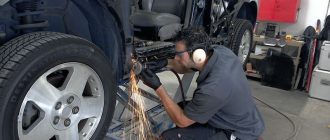
How to Prepare Your Car For Driving in Extreme Heat
In extreme heat, it is important to take extra precautions to ensure the safety and well-being of both yourself and your vehicle. As temperatures rise, your car may be subjected to severe conditions that can lead to breakdowns and other issues. To avoid potential problems, it is crucial to properly prepare your car for driving in extreme heat.
One of the first steps in preparing your car for extreme heat is to check and top off all essential fluids. This includes engine oil, coolant, transmission fluid, and brake fluid. Extreme heat can cause these fluids to evaporate more quickly, so it is important to ensure that they are at the proper levels to prevent damage to your vehicle.
Additionally, it is important to inspect and maintain your car’s cooling system. This includes checking the radiator, hoses, and belts for any signs of wear or damage. A well-functioning cooling system is crucial in extreme heat as it helps regulate the temperature of your engine and prevents overheating.
Another tip to prepare your car for extreme heat is to inspect your tires. Hot pavement can cause the air inside your tires to expand, leading to overinflation. This can put additional stress on your tires and increase the risk of a blowout. Therefore, it is important to check your tire pressure regularly and ensure that it is at the manufacturer’s recommended level.
Furthermore, it is important to protect your car from the harmful effects of the sun. Extreme heat and prolonged exposure to the sun can cause paint damage, fading, and cracking of the dashboard and other interior components. To prevent these issues, consider parking your car in shaded areas or using a sunshade. Additionally, applying a protective wax or sealant on the exterior surfaces can help protect against sun damage.
Lastly, it is important to have a well-stocked emergency kit in your car. Extreme heat can increase the risk of a breakdown or accident, so it is important to be prepared. Some essential items to include in your kit are water, non-perishable food, a first aid kit, a flashlight, and jumper cables. Additionally, make sure to have a fully charged phone and a roadside assistance contact number readily available.
To ensure your safety and the optimal performance of your car in extreme heat, follow these essential tips to prepare your car for driving in extreme heat. By taking these simple precautions, you can enjoy a worry-free and comfortable driving experience even in the hottest of temperatures.
Importance of Car Maintenance
Regular car maintenance is of utmost importance, especially when driving in extreme heat.
Extreme heat can put a lot of stress on your car’s engine, battery, tires, and other components. Therefore, it is crucial to prepare your car and ensure it is in optimal condition to handle the extreme temperatures.
Here are some reasons why car maintenance is important:
- Prevents breakdowns: Regular maintenance can help identify potential issues before they turn into major problems. This can prevent unexpected breakdowns and save you from being stranded in extreme heat.
- Ensures safety: A well-maintained car is safer to drive. When you properly maintain your vehicle, you reduce the risk of accidents or malfunctions due to faulty brakes, worn-out tires, or other mechanical failures.
- Improves performance: Regular maintenance keeps your car running smoothly. It helps optimize fuel efficiency, engine performance, and overall vehicle performance, even in extreme heat.
- Increases lifespan: Taking care of your car through regular maintenance can extend its lifespan. By addressing minor issues early on, you can prevent major damages that may require costly repairs or even the need to replace the entire vehicle.
- Saves money: While car maintenance requires some investment, it can save you money in the long run. By addressing small issues promptly, you can avoid expensive repairs that may arise from neglecting regular maintenance.
Remember, taking care of your car is not just about road safety, but also about your own well-being. So, make sure you follow a regular maintenance schedule and address any issues promptly, especially when driving in extreme heat.
Checking the Cooling System
One of the most important things to do to prepare your car for extreme driving conditions is to check the cooling system. In hot weather, the cooling system is essential for keeping your car’s engine from overheating. Here are some steps you can follow to ensure that your cooling system is in good working condition:
- Check the radiator: Inspect the radiator for any signs of damage or leaks. Look for any cracks or holes in the radiator, and make sure that the radiator cap is securely in place.
- Check the coolant level: Check the coolant level in the radiator and the coolant reservoir. Make sure that the level is within the recommended range. If the coolant level is low, top it up with the appropriate coolant mixture.
- Inspect the hoses: Check the hoses that connect the radiator to the engine for any signs of wear or damage. Look for any cracks or bulges in the hoses, and replace any hoses that appear to be damaged.
- Inspect the water pump: The water pump is responsible for circulating coolant through the engine. Inspect the water pump for any signs of leaks, and ensure that the pump is functioning properly.
- Check the radiator fan: The radiator fan helps to cool down the radiator by blowing air over it. Make sure that the fan is working correctly and that the blades are not damaged or obstructed.
- Flush the cooling system: Over time, debris and contaminants can build up in the cooling system, which can affect its performance. Consider flushing the cooling system to remove any built-up debris and replace the coolant.
- Get a professional inspection: If you’re unsure about the condition of your cooling system or if you notice any signs of overheating, it’s best to take your car to a professional mechanic for a thorough inspection.
By checking and maintaining your car’s cooling system, you can help ensure that your vehicle is ready for extreme driving conditions and reduce the risk of engine overheating.
Inspecting Hoses and Belts
In extreme heat, it is important to inspect the hoses and belts of your car regularly. The extreme temperatures can cause these components to crack, deteriorate, or even snap, leading to potential engine damage and a breakdown on the road.
Here are some essential tips for inspecting hoses and belts in extreme heat:
- Look for cracks and bulges: Inspect all hoses and belts for any visible cracks, bulges, or signs of wear and tear. Pay close attention to areas where the hoses and belts are connected or bent, as these are more prone to damage.
- Check for leaks: Run your fingers along the hoses to check for any signs of leakage. Feel for dampness or wet spots, as these could indicate a leak that needs immediate attention.
- Check for fraying or glazing: Inspect the belts for any fraying or glazing. Fraying indicates that the belt is worn out and needs to be replaced, while glazing refers to a shiny appearance on the belt, indicating excessive heat and friction.
- Check for proper tension: Make sure that the belts are properly tensioned. They should feel tight and have minimal slack. If the belts are loose, they may not be able to efficiently transfer power or drive the necessary components.
- Inspect belt alignment: Check the alignment of the belts. They should sit straight and not have any noticeable twists or misalignments. Misaligned belts can cause excessive wear and increase the risk of failure.
- Refer to the owner’s manual: Consult your car’s owner’s manual for specific guidelines on inspecting and maintaining the hoses and belts. It may provide recommendations on the frequency of inspections and any additional steps you should take.
- Consider professional inspection: If you are unsure about the condition of your hoses and belts or if you notice any significant issues, it is advisable to have a professional mechanic inspect them. They can offer expert advice and replace any worn-out or damaged components as needed.
By regularly inspecting the hoses and belts of your car, you can ensure that they are in good condition and minimize the risk of a breakdown in extreme heat. Remember to prioritize safety and maintenance to keep your car running smoothly and efficiently.
Checking the Radiator for Leaks
One of the most important steps to prepare your car for driving in extreme heat is checking the radiator for leaks. The radiator plays a crucial role in regulating the temperature of your car’s engine, and any leaks can lead to overheating and potential damage.
To check for radiator leaks, follow these steps:
- Inspect the radiator visually: Look for any signs of coolant leakage around the radiator. Check for puddles of coolant or damp areas around the radiator and its hoses. Leaks may also manifest as white stains on the radiator or hoses.
- Check the coolant level: Open the radiator cap (only when the engine is cool) and check the coolant level. If the coolant level is consistently low, it may indicate a leak in the system. Make sure to add coolant if necessary, following the manufacturer’s guidelines.
- Pressurize the cooling system: Use a radiator pressure tester to pressurize the cooling system. This will help you detect any hidden leaks that are not visible during a visual inspection. Pay attention to any drops in pressure, as they may indicate a leak.
- Inspect the radiator hoses: Check the condition of the radiator hoses, looking for any cracks, bulges, or signs of wear. A damaged hose can easily lead to leaks and should be replaced immediately.
- Check the radiator cap: Inspect the radiator cap for any signs of damage or deterioration. A faulty radiator cap can cause coolant leaks and affect the overall efficiency of the cooling system.
Remember, a well-maintained and leak-free radiator is crucial for keeping your car’s engine cool during extreme heat. If you notice any leaks or issues during the inspection, it is recommended to have your car serviced by a professional mechanic.
By taking the time to check the radiator for leaks and addressing any issues promptly, you can ensure that your car is prepared to handle the heat and avoid potential engine damage.
Flushing and Replacing Coolant
Extreme heat can put a lot of stress on your car’s cooling system, so it’s essential to prepare your car for driving in extreme temperatures. One important maintenance task is flushing and replacing the coolant.
Driving in extreme heat can cause your engine to overheat, leading to costly repairs and potentially leaving you stranded on the side of the road. Flushing and replacing the coolant is a simple task that can help prevent overheating and keep your car running smoothly in hot weather.
Here’s how to flush and replace the coolant in your car:
- Make sure your car is parked on a level surface and the engine is cool.
- Locate the coolant reservoir, usually a translucent plastic tank with a “coolant” label.
- Place a container or pan underneath the coolant reservoir to catch any coolant that may spill during the flushing process.
- Using a pair of pliers, loosen the clamp that connects the upper radiator hose to the engine and carefully remove the hose.
- Allow the coolant to drain completely into the container or pan.
- Once all the coolant has drained, flush the system with water. You can use a garden hose to flush the radiator and engine block.
- After flushing, reconnect the upper radiator hose and secure it with the clamp.
- Refill the coolant reservoir with a mixture of coolant and water as specified in your car’s owner manual. Make sure to use the correct ratio for your climate.
Keep in mind that flushing and replacing the coolant should be done regularly as part of your car’s maintenance routine, not just before driving in extreme heat. It’s important to check your coolant levels regularly and top them off if necessary.
In addition to flushing and replacing the coolant, it’s also a good idea to check other components of your car’s cooling system, such as the radiator, water pump, and thermostat, to ensure they are in proper working condition. Regular maintenance and preventive measures will help keep your car running smoothly and prevent issues in extreme heat.
Maintaining the Battery
In extreme heat, the driving conditions can put a strain on your car’s battery. To ensure that your battery remains in good working condition and doesn’t leave you stranded, it is important to take some preventive measures.
- Check the battery’s age: Extreme heat can shorten the lifespan of your car battery. If your battery is more than three years old, consider replacing it to avoid unexpected breakdowns.
- Inspect the battery terminals: High temperatures can cause corrosion on the battery terminals, which can disrupt the flow of electricity. Regularly inspect the terminals and clean them with a wire brush if necessary to maintain a good connection.
- Protect the battery: Consider installing a battery insulator or cover to shield it from the extreme heat. This can help prevent the battery from overheating and extend its lifespan.
- Avoid long periods of inactivity: If you’re not planning to use your car for an extended period during extreme heat, it’s recommended to start the engine and let it run for a few minutes every few days. This helps to keep the battery charged and prevent it from draining.
- Keep an eye on the battery warning light: If the battery warning light on your dashboard comes on, it may indicate a problem with the battery or the charging system. Have it checked by a professional to avoid potential issues.
- Have the battery tested: If you’re unsure about the condition of your battery, consider having it tested by a qualified technician. They can perform a battery load test to assess its health and determine if it needs to be replaced.
- Carry jumper cables or a portable jump starter: In case your battery does fail, it’s always a good idea to have a set of jumper cables or a portable jump starter in your car. This can help you get a jump start from another vehicle or provide the necessary power to start your car on your own.
By following these tips, you can ensure that your car’s battery is properly maintained and prepared for driving in extreme heat. Taking care of your battery can prevent unexpected breakdowns and save you from potential headaches on the road.
Checking the Battery’s Fluid Levels
One important aspect of preparing your car for driving in extreme heat is to check the fluid levels in your car’s battery. Heat can have a significant impact on your car’s battery, causing it to lose its charge more quickly.
To check the battery’s fluid levels, follow these steps:
- Make sure the car is turned off and the engine is cool before opening the hood.
- Locate the car’s battery. It is usually located near the front of the engine compartment.
- Inspect the battery for any signs of damage, such as cracks or leaks. If you notice any damage, it may be time to replace the battery.
- Check the battery’s fluid levels by removing the caps on top of the battery. Some batteries may have a translucent casing that allows you to see the fluid levels without removing the caps.
- If the fluid levels are low, carefully add distilled water to each cell until the level reaches the recommended fill line. Be sure not to overfill the cells.
- After filling the battery, secure the caps back onto the battery tightly.
Checking the battery’s fluid levels regularly can help ensure that your car’s battery is operating at its optimal level in extreme heat conditions. It can also help prevent potential battery failure and the inconvenience of a dead car battery.
Cleaning the Battery Terminals
Extreme heat can have a negative impact on your car’s battery, causing it to lose its charge more quickly. To ensure that your battery stays in good condition and performs optimally during your hot weather drives, it’s important to clean the battery terminals regularly.
Here are some tips for cleaning the battery terminals:

- Gather the necessary tools and materials: You will need safety gloves, a wire brush or battery terminal cleaning tool, baking soda, water, and a clean cloth or towel.
- Disconnect the battery: Before cleaning the terminals, make sure to turn off your car’s engine and disconnect the battery. This will prevent any electrical accidents or shorts.
- Mix a cleaning solution: In a small container, mix baking soda with water to create a paste-like consistency.
- Apply the cleaning solution: Dip the wire brush or battery terminal cleaning tool into the baking soda solution and scrub the terminals gently. Pay special attention to any signs of corrosion or buildup.
- Rinse with water: After scrubbing, rinse the terminals with clean water to remove any residue or excess baking soda.
- Dry and reattach the terminals: Use a clean cloth or towel to dry the terminals thoroughly. Once dry, reattach the terminals, ensuring a secure connection.
- Test the battery: After cleaning and reattaching the terminals, start your car’s engine and check if the battery is functioning properly. If you still experience issues, it may be time to replace the battery.
Cleaning the battery terminals regularly can prevent corrosion and ensure that your car’s electrical system functions smoothly in extreme heat. It’s a simple maintenance task that can save you from potential breakdowns and costly repairs in the future.
Checking the Tires
When driving in extreme heat, it is crucial to properly prepare your car’s tires. The heat can take a toll on your tires and increase the risk of blowouts or other tire-related issues. Here are some essential tips to ensure your tires are in good condition:
- Check the tire pressure: Extreme heat can cause the tire pressure to rise, so it’s important to regularly check and adjust the tire pressure to the manufacturer’s recommended level. This will help prevent overinflated tires that are more prone to blowouts.
- Inspect the tread: Driving with worn-out tires can be dangerous, especially in extreme heat. Check the tread depth and look for any signs of uneven wear or damage. If the tread is too low or there are any issues, consider replacing the tires to ensure optimal traction and handling.
- Look for cracks or bulges: Extreme heat can also cause the rubber in the tires to deteriorate. Inspect the sidewalls for any cracks or bulges, as these can indicate a weakened tire that is more likely to fail. If you notice any abnormalities, it’s best to replace the tire.
- Rotate the tires: Regular tire rotation is important for maintaining even tread wear. In extreme heat, this becomes even more crucial as the heat can accelerate tire wear. Follow the manufacturer’s recommendations for tire rotation intervals to ensure maximum tire life.
- Keep a spare: In case of a tire emergency, it’s essential to have a spare tire in good condition. Check the spare tire’s pressure and inspect it for any signs of damage. Having a functional spare tire can save you from being stranded in extreme heat.
Remember, your car’s tires are the only point of contact between your vehicle and the road. Keeping them in good condition is crucial for safe and efficient driving, especially in extreme heat. Regularly checking and maintaining your tires will help ensure a smooth and worry-free journey.
Inspecting Tire Pressure
One important aspect of driving in extreme heat is to regularly inspect your car’s tire pressure. Heat can cause the air inside the tires to expand, leading to overinflated tires. Overinflated tires can be just as dangerous as underinflated tires, as they can affect the handling and braking of your car.
To ensure that your tire pressure is at the recommended level, follow these tips:
- Check the owner’s manual: The owner’s manual of your car will provide you with the recommended tire pressure for your specific vehicle. It is important to follow these guidelines as tire pressure requirements can vary.
- Invest in a tire pressure gauge: A tire pressure gauge is a useful tool to have to accurately measure the tire pressure. It is recommended to check the tire pressure when the tires are cool, as driving can cause the air inside the tires to heat up and give you an inaccurate reading.
- Inspect the tires visually: Look for any noticeable signs of underinflation or overinflation, such as bulging or uneven wear. These signs can indicate a tire pressure issue that needs to be addressed.
- Adjust the tire pressure: If the tire pressure is too low, use an air compressor to add air until it reaches the recommended level. If the tire pressure is too high, you can release some air by pressing the center of the tire valve with a small tool or the tip of a pen.
Regularly inspecting your car’s tire pressure is a simple yet important step in preparing your car for driving in extreme heat. By keeping your tire pressure at the recommended level, you can ensure optimal handling, braking, and overall safety while on the road.
Checking the Tread Depth
When preparing your car for driving in extreme heat, it’s important to remember that the condition of your tires can greatly affect your safety on the road. One key aspect to check is the tread depth of your tires.
Why is tread depth important?
The tread depth of your tires plays a vital role in providing traction on the road. As the heat increases, the road surface can become more slippery and prone to accidents. A good tire tread depth ensures that your car maintains good grip and stability, reducing the risk of skidding or hydroplaning.
How to check the tread depth?
There are several methods to check the tread depth of your tires. One common method is to use a tread depth gauge, which can be purchased at most auto parts stores. Simply insert the gauge into the tread grooves and measure the depth. To be considered safe, the tread depth should be at least 1/16 of an inch or 1.6 millimeters.
If you don’t have a tread depth gauge, you can also use the “penny test”. Take a penny and insert it upside down into the tread grooves. If you can see the top of Lincoln’s head, it means that your tread depth is too low and it’s time to replace your tires.
When to replace tires?
It’s important to check the tread depth of your tires regularly, especially before driving in extreme heat. If the tread depth is less than the recommended 1/16 of an inch or 1.6 millimeters, it’s time to replace your tires. Additionally, if you notice any signs of wear, such as cracks, bulges, or uneven tread wear, it’s also a good indication that you need to replace your tires.
Conclusion:
Checking the tread depth of your tires is an essential step to prepare your car for driving in extreme heat. Ensuring that your tires have sufficient tread depth will help maintain good grip and stability on the road, reducing the risk of accidents. Regularly check the tread depth and replace your tires if necessary to drive safely in hot weather conditions.
Preparing an Emergency Kit
When driving in extreme heat, it’s important to be prepared for any potential emergencies that may arise. Creating an emergency kit for your car can help ensure your safety and well-being in unexpected situations. Here are some essential items to include in your emergency kit:
- Water: Bring an ample supply of drinking water to stay hydrated in case of a breakdown or being stranded.
- Non-perishable food: Pack some high-energy snacks like granola bars or nuts for sustenance.
- Blanket and extra clothing: Have a warm blanket and extra clothing on hand in case you need to spend extended periods in your car.
- First aid kit: Include basic medical supplies such as bandages, antiseptic wipes, pain relievers, and any necessary medications.
- Flashlight: Make sure to have a working flashlight and extra batteries to navigate in the dark.
- Emergency contact information: Keep a list of emergency contact numbers, including friends, family, and roadside assistance services.
It’s also a good idea to familiarize yourself with how to use each item in your emergency kit. Additionally, periodically check the supplies for expiration dates and replace when necessary.
By being proactive and preparing an emergency kit, you can have peace of mind knowing that you are ready for anything that comes your way while driving in extreme heat.
Including Water and Non-Perishable Food
When preparing your car for driving in extreme heat, it is important to consider your basic needs in case of an emergency. One essential item to include in your car is a supply of water. Extreme heat can quickly lead to dehydration, so having enough water on hand is crucial.
It is recommended to keep several gallons of water in your car. This can be stored in large, sturdy containers that will not leak or break in the heat. In addition to drinking water, you should also consider packing some water for other uses, such as cleaning or cooling down your car.
Non-perishable food is another important item to include in your car. In the event of an emergency or prolonged exposure to extreme heat, you may find yourself stranded or unable to access food. Non-perishable food items, such as granola bars, canned fruits and vegetables, protein bars, and nuts, can provide sustenance and energy during these times.
When choosing non-perishable food items, it is important to consider their durability in extreme heat. Avoid foods that can melt or spoil easily, as they may become inedible or attract pests. Opt for foods that can withstand high temperatures without spoiling, such as sealed packages or cans.
Additionally, it is recommended to pack a manual can opener in case the non-perishable food you choose requires one. This will ensure that you are able to access and consume the food in any situation.
To organize and store your water and non-perishable food items, consider using a sturdy container or bag that can withstand extreme heat. This will keep your supplies secure and easily accessible in case of an emergency.
By including water and non-perishable food items in your car, you are taking an important step in preparing for driving in extreme heat. These supplies can help ensure your safety and well-being in case of an emergency or prolonged exposure to high temperatures.
FAQ:
What are some essential tips to prepare your car for driving in extreme heat?
Some essential tips to prepare your car for driving in extreme heat include checking the coolant levels, inspecting the tires, ensuring the battery is in good condition, checking the air conditioning system, and keeping an emergency kit in the car.
Why is it important to check the coolant levels in extreme heat?
Checking the coolant levels in extreme heat is important because it helps prevent the car from overheating. When the temperature rises, the engine generates more heat, and having the proper amount of coolant helps regulate the engine temperature and avoid potential damage.
How often should I inspect the tires in extreme heat?
It is recommended to inspect the tires in extreme heat at least once a month. High temperatures can cause the tire pressure to increase and the rubber to degrade faster, so regular inspections ensure that the tires are in good condition and properly inflated.
What should I look for when inspecting the battery in extreme heat?
When inspecting the battery in extreme heat, you should look for signs of corrosion or leakage, check the battery terminals for tightness and cleanliness, and ensure that the battery is securely held in place. Extreme heat can affect the battery’s performance, so regular inspections are important to prevent any issues.
Why is it necessary to keep an emergency kit in the car during extreme heat?
Keeping an emergency kit in the car during extreme heat is necessary because it can help in case of any unexpected situations. The kit can include items such as water, snacks, a first aid kit, a flashlight, jumper cables, and a spare tire, which can be crucial in emergencies and provide necessary assistance until help arrives.
What are some essential tips for preparing your car for driving in extreme heat?
Some essential tips for preparing your car for driving in extreme heat are checking the coolant level, inspecting the tires, ensuring the air conditioning is working properly, checking the battery, keeping the car well-maintained, and carrying emergency supplies.





